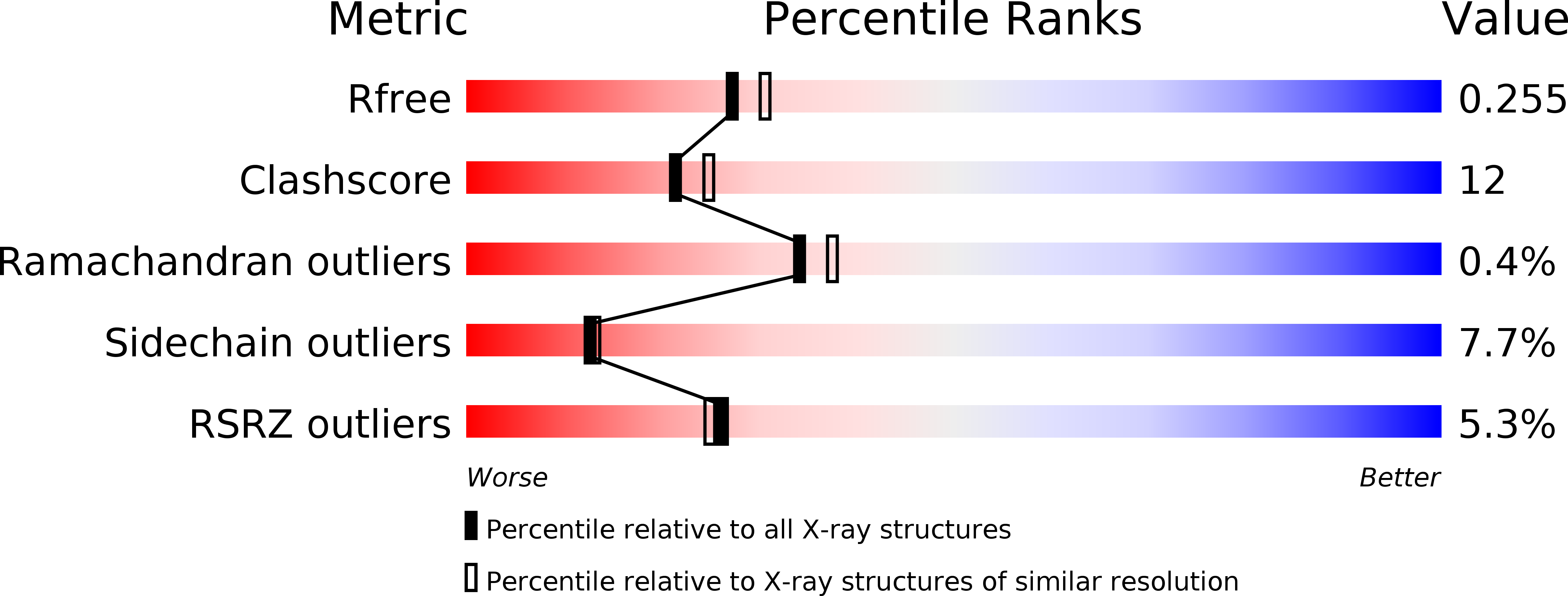Chloramphenicol Biosynthesis: The Structure of CmlS, a Flavin-Dependent Halogenase Showing a Covalent Flavin-Aspartate Bond
Podzelinska, K., Latimer, R., Bhattacharya, A., Vining, L.C., Zechel, D.L., Jia, Z.(2010) J Mol Biol 397: 316-331
- PubMed: 20080101
- DOI: https://doi.org/10.1016/j.jmb.2010.01.020
- Primary Citation of Related Structures:
3I3L - PubMed Abstract:
Chloramphenicol is a halogenated natural product bearing an unusual dichloroacetyl moiety that is critical for its antibiotic activity. The operon for chloramphenicol biosynthesis in Streptomyces venezuelae encodes the chloramphenicol halogenase CmlS, which belongs to the large and diverse family of flavin-dependent halogenases (FDH's). CmlS was previously shown to be essential for the formation of the dichloroacetyl group. Here we report the X-ray crystal structure of CmlS determined at 2.2 A resolution, revealing a flavin monooxygenase domain shared by all FDHs, but also a unique 'winged-helix' C-terminal domain that creates a T-shaped tunnel leading to the halogenation active site. Intriguingly, the C-terminal tail of this domain blocks access to the halogenation active site, suggesting a structurally dynamic role during catalysis. The halogenation active site is notably nonpolar and shares nearly identical residues with Chondromyces crocatus tyrosyl halogenase (CndH), including the conserved Lys (K71) that forms the reactive chloramine intermediate. The exception is Y350, which could be used to stabilize enolate formation during substrate halogenation. The strictly conserved residue E44, located near the isoalloxazine ring of the bound flavin adenine dinucleotide (FAD) cofactor, is optimally positioned to function as a remote general acid, through a water-mediated proton relay, which could accelerate the reaction of the chloramine intermediate during substrate halogenation, or the oxidation of chloride by the FAD(C4alpha)-OOH intermediate. Strikingly, the 8alpha carbon of the FAD cofactor is observed to be covalently attached to D277 of CmlS, a residue that is highly conserved in the FDH family. In addition to representing a new type of flavin modification, this has intriguing implications for the mechanism of FDHs. Based on the crystal structure and in analogy to known halogenases, we propose a reaction mechanism for CmlS.
Organizational Affiliation:
Department of Biochemistry, Queen's University, Kingston, Ontario, Canada K7L 3N6.















